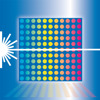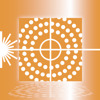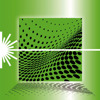 |
Daten-
blatt:
 |
APP N° 731
|
Differentiation of tin and air side of float glasses
The tin side should be differentiated from the air side of float glasses.
|

|
 |
Daten-
blatt:
 |
APP N° 665
|
Relief detection on glass bottles
Reliefs on different glass bottles should be detected.
|

|
 |
Daten-
blatt:
 |
APP N° 647
Param.:
 |
INI:
 |
|
Color measurement of glass plates
The color of glass plates should be measured. It should be noted, that the colored opaque glass layer is covered from a transparent shiny glass layer and the color should be measured through the transparent glass layer. The challenge is, to avoid that the direct reflection from the surface of the transparent glass layer is influencing the color measurement result.
|

|
 |
Daten-
blatt:
 |
APP N° 613
|
Distance measurement to colored car glass
The distance to colored car glass should be measured. It has to be taken into account, that due to the fact, that several measuring points at the glass surface are necessary, the space for the respective measurement device, especially the frontend is limited.
|

|
 |
Daten-
blatt:
 |
APP N° 579
Param.:
 |
|
Defect detection on glass plates
Defects, like scratches and splintering of cutting edges on glass discs should be detected.
|

|
 |
Daten-
blatt:
 |
APP N° 569
Param.:
 |
|
Bottle neck height control
The height of the bottle neck should be measured.
|

|
 |
Daten-
blatt:
 |
APP N° 568
Param.:
 |
|
Glass bottle positioning
Glass bottles should be positioned.
|

|
 |
Daten-
blatt:
 |
APP N° 567
Param.:
 |
INI:
 |
|
Color differentiation of flat glasses
Flat glasses should be color differentiated.
|

|
 |
Daten-
blatt:
 |
APP N° 541
|
Optical transmission control of different glass plates
The transmission of different glass plates should be controlled.
|

|
 |
Daten-
blatt:
 |
APP N° 505
Param.:
 |
INI:
 |
|
Presence control of a laser engraving on a glass bottle
The presence as well as the intensity of a laser engraving on glass bottles should be controlled.
|

|
 |
Daten-
blatt:
 |
APP N° 492
|
Dot detection on glass bottles
Dots on glass bottles should be detected during the rotation.
|

|
 |
Daten-
blatt:
 |
APP N° 469
|
Detection of an UV blocking layer on transparent glass bottles
The presence of an UV blocking layer should be detected on transparent glass bottles.
|

|
 |
Daten-
blatt:
 |
APP N° 450
|
Reflected light color control of coatings on glass plates
The coating of glass plates should be color controlled in the reflected light mode.
|

|
 |
Daten-
blatt:
 |
APP N° 449
|
Transmitted light color control of coatings on glass plates
The coating of glass plates should be color controlled in the through beam way.
|

|
 |
Daten-
blatt:
 |
APP N° 366
|
Color control of flat glass
The color of flat glass should be controlled in the transmitted-light mode.
|

|
 |
Daten-
blatt:
 |
APP N° 343
|
Detection of a brand name on fog light glasses
A logo should be detected on a fog light glass. It has been shown that the brand name in the glass is acting like an optical component and deflects the laser beam in a different way compared to the normal glass surface.
|

|
 |
Daten-
blatt:
 |
APP N° 304
|
Differentiation of the backside from the front side of a glass plate
The matt backside of a glass plate should be differentiated from the glossy front side.
|

|
 |
Daten-
blatt:
 |
APP N° 290
|
Color differentiation of bottom colored clear glass bottles
Bottom colored clear glass bottles should be differentiated. At this, four different colored bottles can be possible: clear, yellow, red and violet.
|

|
 |
Daten-
blatt:
 |
APP N° 284
|
Position control of filament holders in bulbs
The position of the filament holders in clear as well as red glass bulbs should be controlled.
|

|
 |
Daten-
blatt:
 |
APP N° 232
|
Diameter measurement and position control of glass rods
The diameter as well as the position of glass rods, the starting product of optical fibers, should be measured. Typical diameters of glass rods are in the range of 20mm to 90mm.
|

|
 |
Daten-
blatt:
 |
APP N° 217
|
Differentiation of the polished surface from the grinded surface of a glass plate
During the handling of glass plates the position of the polished surface must be controlled.
|

|
 |
Daten-
blatt:
 |
APP N° 101
|
Spray-jet control during the glass bottle coating process in the pharmaceutical industry
During the production of glass bottles for the pharmaceutical industry the inner surface must be coated with a certain chemical film, which makes the bottles diffuse. At this crystals will be sprayed through the bottle neck with a nozzle into the bottle. During this process, the bottles have still a temperature of a few hundred centigrade.
|

|
 |
Daten-
blatt:
 |
APP N° 62
|
Color control of tinted glass plates
During the assembling of cars the color of the glasses from the side door must be checked. It is only possible to control from one side and even an additional reflector cannot be used.
|

|
 |
Daten-
blatt:
 |
APP N° 61
|
Color differentiation of tinted and colored glass plates
During the subsequent processing of glass plates the different tinted and colored glasses must be controlled and discerned.
|

|
 |
Daten-
blatt:
 |
APP N° 59
|
Position measurement of a transparent glass plate
Glass handling machines must be informed not only about the distance of a glass plate but also about the edge position of a glass plate. However the detection of the edge of a transparent glass plate is not so easy, especially if there is nearly no phase on the edges. The direct reflection rate of visible light on a standard glass surface is normally approximately 4% and with the additional reflection of the second surface around 8% of the light will be reflected.
|

|
 |
Daten-
blatt:
 |
APP N° 58
|
Distance measurement on transparent glass plates
During the handling process of glass plates the distance of the glass surface must be controlled. As during the beveling process the glass plate must be positioned in a way that the glass edges can be feed symmetrically into the abrasive block of the grinding machine, otherwise the phases on both sides of the glass plate are different. Due to the fact, that the glass surface delivers nearly no diffuse reflected light but only direct reflected light, a standard laser displacement sensor cannot be used.
|

|
 |
Daten-
blatt:
 |
APP N° 22
|
Barvna diferenciacija barvnih steklenic
V procesu recikliranja barvnih steklenic je nujno ločevanje steklenic različnih barv z namenom pravilnega ločevanja materialov.
Color differentiation of colored glass bottles
In the glass recycling industry it is necessary to separate the different colored bottles to get a correctly sorted material.
|

|
 |
Daten-
blatt:
 |
APP N° 17
|
Razlikovanje prozornih in mlečnih steklenic
V steklarski industriji se pri proizvodnji steklenic za farmacevtsko industrijo morajo biti le-te znotraj prevlečene z “mlečnim” nanosom. Naloga je razlikovati in ločiti le-te od prozornih.
Detection of clear and milky glass bottles
In the glass industry during the process of glass bottle manufacturing for the pharmaceutical industry, the glass bottles must be coated inside. The task is to check, whether the bottle is coated or uncoated.
|

|
 |
Daten-
blatt:
 |
APP N° 16
|
Detekcija prozornih oz. svetlečih površin na matiranem steklu
Med proizvodnjo matiranega stekla se lahko na steklu pojavijo majhne površine oz. madeži, ki so bodisi prozorni ali bleščeči in te je potrebno zaznati. Premer le-teh, ki ga je mogoče zaznati, se začne pri približno 3 mm.
Detection of glossy regions on a matt-finished glass plate
During the production of matt-finished glass plates the matt-finished surface must be controlled particularly with regard to small glossy spot. The glossy domains which should be detected are starting with a diameter of approximately 3 mm.
|

|